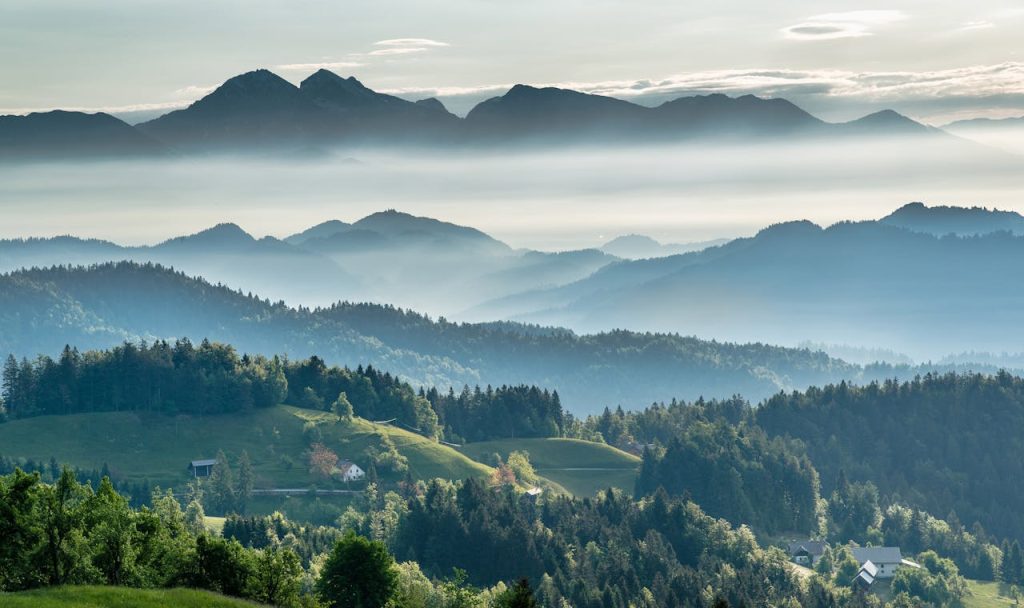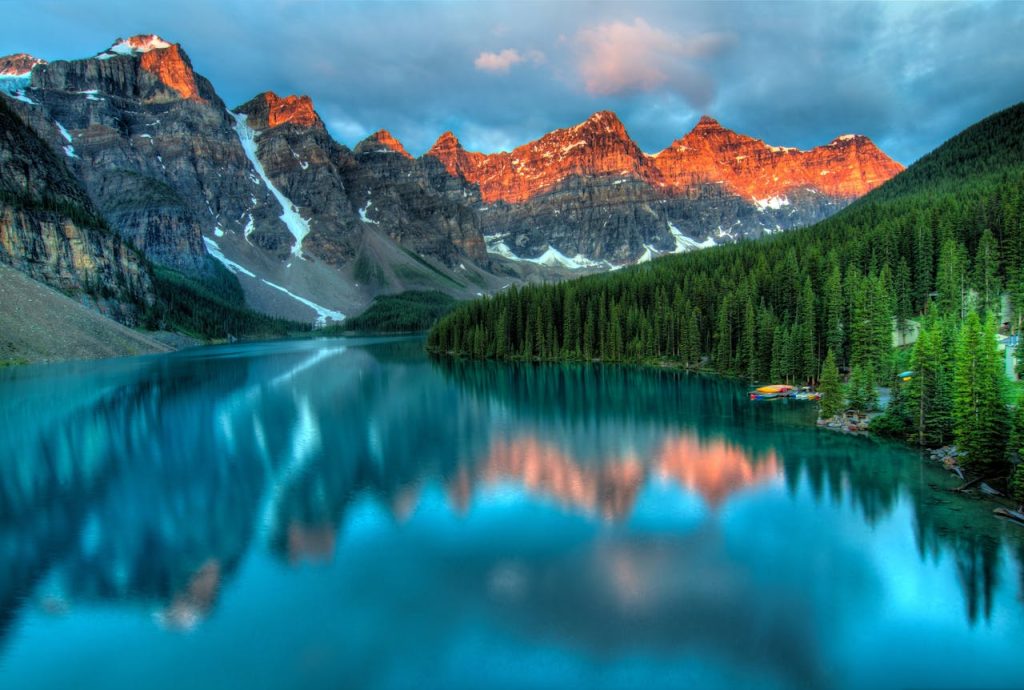Tourism in the Alps is a huge part of the region’s charm and economy, attracting millions of visitors every year. The breathtaking landscapes and endless recreational activities make it a top destination.
But with the boom in tourism, there’s a pressing need to focus on sustainability. Sustainable tourism is all about maintaining the delicate balance between enjoying the Alps and protecting them.
Resort managers and local authorities need to ensure that tourism projects are eco-friendly and socially responsible. They’re measuring sustainability and improving their practices to protect the environment and support the local economy.
The key is to find a way to welcome tourists while preserving the natural beauty and local communities of the Alps, and this is exactly what we will be covering in this blog.
The Rich History of Alpine Tourism
Tourism in the Alps has come a long way since its early days. It started in the 19th century with mountaineering and a fascination with alpine landscapes. Wealthy Europeans, especially from Britain, were among the first explorers. The establishment of the Alpine Club in 1857 contributed to developing an interest in climbing and trekking.
The arrival of railways in the late 19th century made the Alps more accessible, leading to the development of hotels and resorts as this early interest set the stage for the bustling tourism industry we see today. Towns like Chamonix and Zermatt became popular among adventurers and nature lovers.
By the mid-20th century, winter tourism, especially skiing, took off. Ski resorts like St. Moritz and Kitzbühel gained international fame. After World War II, advancements like ski lifts and snowmaking equipment revolutionized the industry.
Mass tourism grew with increasing middle-class affluence, leading to more ski resorts and expanded infrastructure. By the late 20th century, there was a growing awareness of the ecological impacts, and environmentally conscious tourism practices began to take hold.
Economic impact on local communities
Tourism is vital for the Alpine economy, supporting countless local businesses, from hotels and restaurants to small local shops. Moreover, ski area operators and related industries provide significant employment opportunities.
However, the demand for tourist facilities can strain natural resources and impact the environment. The seasonal nature of tourism also brings economic fluctuations.
Current Tourism Trends in the Alps
The Alps offer a wide range of activities and see distinct seasonal trends. Popular destinations in Austria, France, and Switzerland draw visitors year-round.
Types of tourism and seasonal changes
Tourist activities in the Alps change with the seasons. Except for winter activities, the Alps cater to various tourism types, including skiing, mountain biking, and eco-tourism.
- Naturally, winter remains dominated by skiing and snowboarding, with the Swiss Alps attracting thousands of tourists to their world-class ski resorts.
- In the summer, the focus shifts to hiking, climbing, and mountain biking, so France and Switzerland experience a surge in such activities. Nature parks and accessible trails become popular, attracting those interested in eco-tourism.
It’s important to mention that ecotourism is on the rise as more travelers seek sustainable travel options, choosing activities with less environmental impact.
Popular destinations and attractions
Top destinations in the Alps include Chamonix and Courchevel in France and Zermatt, Verbier, and St Moritz in Switzerland. They are renowned for skiing, mountaineering, luxurious resorts, and adventurous trails. These locations are key to the winter tourism industry, attracting visitors with their scenic beauty and robust infrastructure.
Environmental Impacts of Tourism

Although it may not be so apparent, tourism in the Alps affects wildlife, natural habitats, and pollution levels. It brings significant environmental challenges, from habitat disruption to increased carbon emissions. Balancing nature conservation with tourism growth is critical to preserving biodiversity and fragile ecosystems.
- Increased foot traffic and infrastructure development fragment habitats, affecting species like the Alpine Ibex and Golden Eagle. Noise and light pollution alter animal behavior, reducing breeding success and displacing them from critical areas. Conservation efforts aim to mitigate these impacts by creating protected zones and restricting access to sensitive areas.
- Pollution is a major concern in the Alpine region. Tourists generate waste that often ends up littering trails and water bodies. Seasonal tourist influxes overwhelm waste management systems, leading to improper disposal and pollution. Proper infrastructure and educational campaigns are essential to minimize these issues and protect the Alps’ pristine nature.
- Climate change directly impacts tourism, especially winter tourism. Unpredictable snowfall affects ski resort operations, shortening the snow season and impacting revenue. Glacier retreat and ice melt also pose risks to mountain activities and natural beauty.
What Does the Future Hold?
It seems that the future of tourism in the Alps will be more sustainable than ever. Trends suggest a proactive approach toward integrating green energy solutions and advanced conservation strategies.
Predictions
In the next few decades, eco-friendly practices will take center stage. Tour operators may offer more low-carbon travel options, like electric vehicles and eco-lodging. There will likely be a rise in nature-based experiences as people seek sustainable and immersive activities.
Moreover, collaborations between local governments and environmental organizations will enhance infrastructure that minimizes environmental impact. Technological advances are already enabling smarter resource management, improving the visitor experience without harming ecosystems.
Sustainable practices
Various environmental initiatives are focusing on renewable energy and waste reduction. Mountain resorts might extensively implement solar and wind energy solutions. Waste management systems are becoming more sophisticated, with more strict recycling protocols and the promotion of zero- to low-waste tourism.
Alpine destinations are gradually investing in green building technologies for hotels and facilities, reducing their carbon footprint. Embracing circular economy principles will help tourism sectors reduce waste and enhance resource efficiency.
Balancing tourism and conservation
Strategic planning and community involvement are crucial for balancing tourism and conservation. For instance, protected areas and visitor limits can prevent over-tourism and preserve biodiversity. Also, encouraging off-peak travel seasons might reduce environmental strain.
Educational programs about local ecosystems and conservation efforts can foster responsible behavior among tourists. Integrating local stakeholders, including farmers and residents, into tourism planning ensures that economic and environmental benefits are equitably distributed.
Addressing the Challenges

In this journey sustainable tourism in the Alps, a number of economic, social, and regulatory challenges need to be addressed.
Economic benefits vs. environmental protection
Needless to say, achieving balance between economic benefits and sustainability is key. Mass tourism can lead to landscape degradation and strain on local resources while increased carbon emissions from travel and activities add to the environmental burden.
Collaboration between tourism companies and local governments is essential to implement eco-friendly practices that reduce environmental impacts while promoting economic growth.
Resistance from traditional tourism operators
Traditional operators often resist changes required for sustainable tourism, fearing increased costs and regulatory complexities. Indeed, adapting to new, eco-friendly technologies and investing in sustainable infrastructure can be challenging.
As a solution, incentives like tax breaks or grants for sustainable practices as well as education and training on the benefits of sustainable tourism can foster a more supportive environment.
Tourists’ needs and behaviors
Tourists’ behaviors significantly impact sustainable tourism. Aligning visitors’ expectations with sustainability goals requires strategic initiatives.
Promoting eco-friendly accommodations and responsible travel options can encourage tourists to adopt sustainable behaviors. Information campaigns and interactive experiences that educate visitors about their environmental impact can help shift behaviors towards sustainability.
Policy and regulation hurdles
Finally, diverse regulatory environments, inconsistent enforcement of sustainability policies, and competing interests between economic development and environmental protection pose significant challenges.
Therefore, ensuring robust and coherent policies that prioritize sustainability is essential. First and foremost, cross-border cooperation among Alpine nations can create a cohesive framework supporting sustainable tourism. Enhanced regulatory mechanisms that monitor and evaluate sustainability practices can encourage compliance and progress.
Moreover, meeting these challenges requires joined effort from all stakeholders, including industry leaders, government bodies, and tourists, to promote a more sustainable future for tourism in the Alps.
Preserving the Alps for Decades to Come
Balancing tourism growth with sustainability is crucial to preserving local culture and the environment while reaping economic benefits.
And we need to remember that tourists play a crucial role as well. When tourists choose eco-friendly travel options and support local businesses, they help maintain the Alps’ charm and vibrancy. Therefore, the need for continued innovation and adaptation in sustainable development and tourism practices in the Alps should remain the top priority for locals and tourists alike.
Finally, the urgency for joined efforts between countries and institutions cannot be overemphasized in the quest to make the Alps fully sustainable while keeping them one of the most popular destinations for tourists across the globe.
